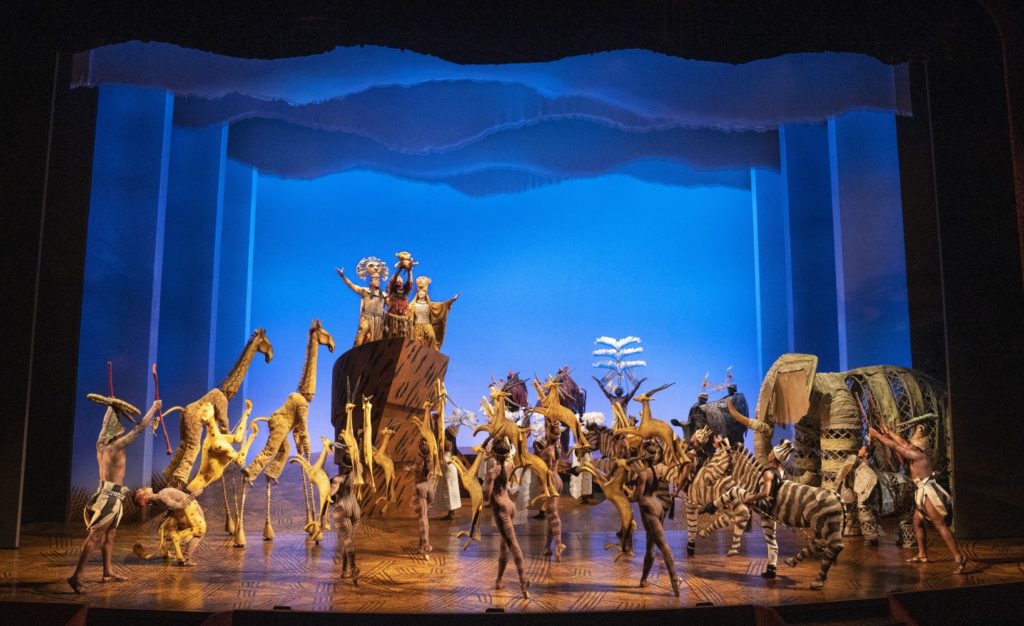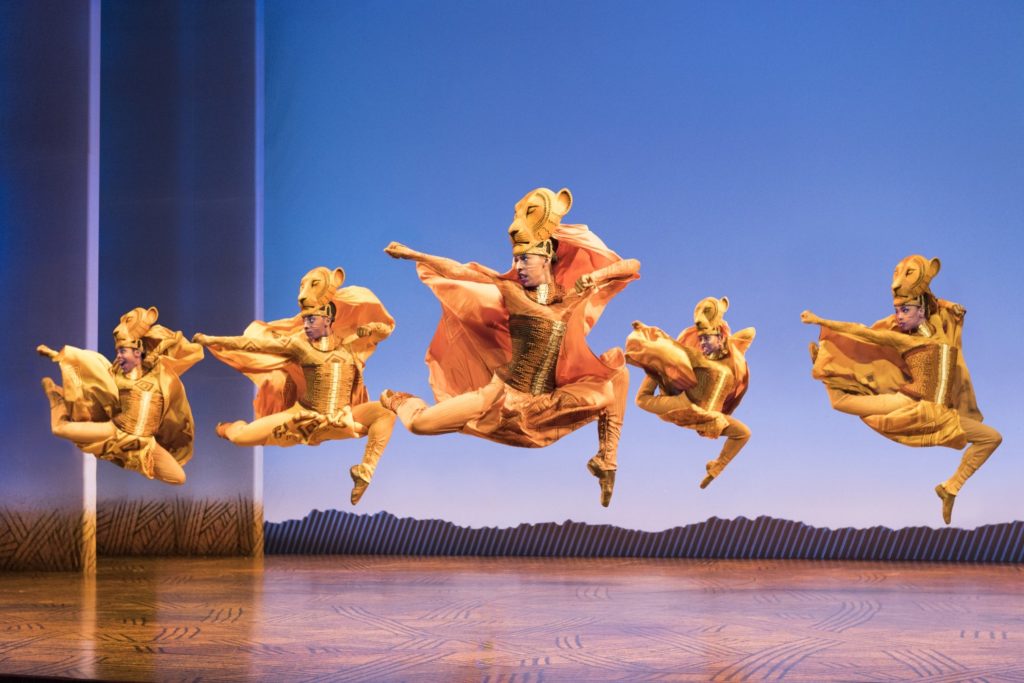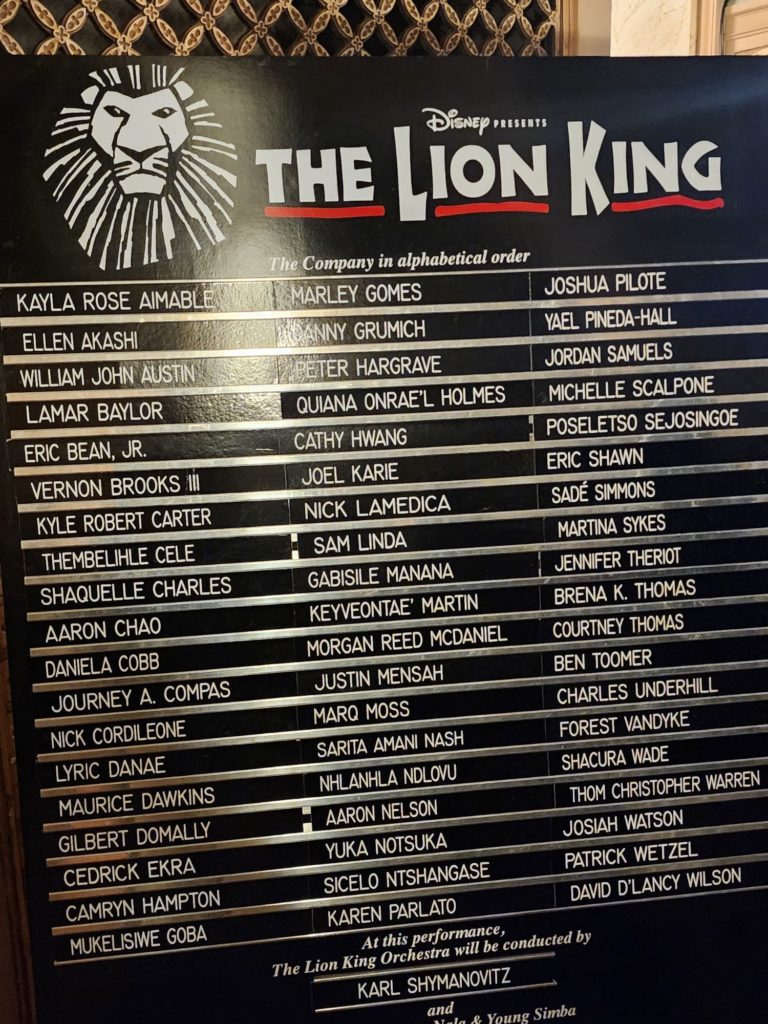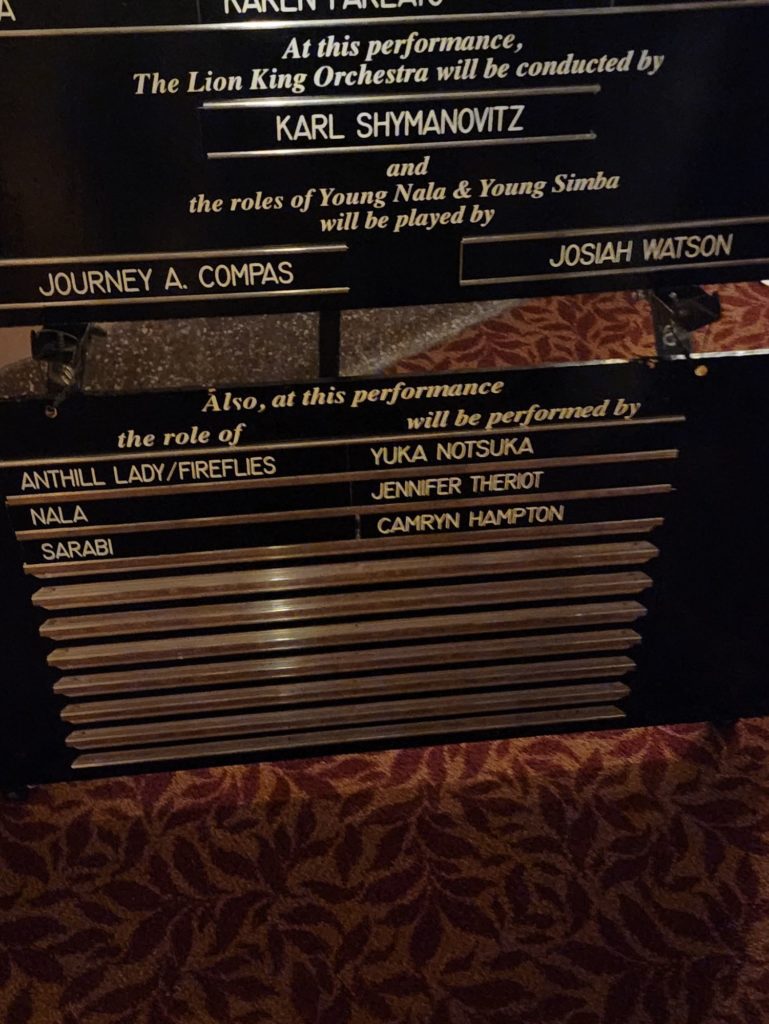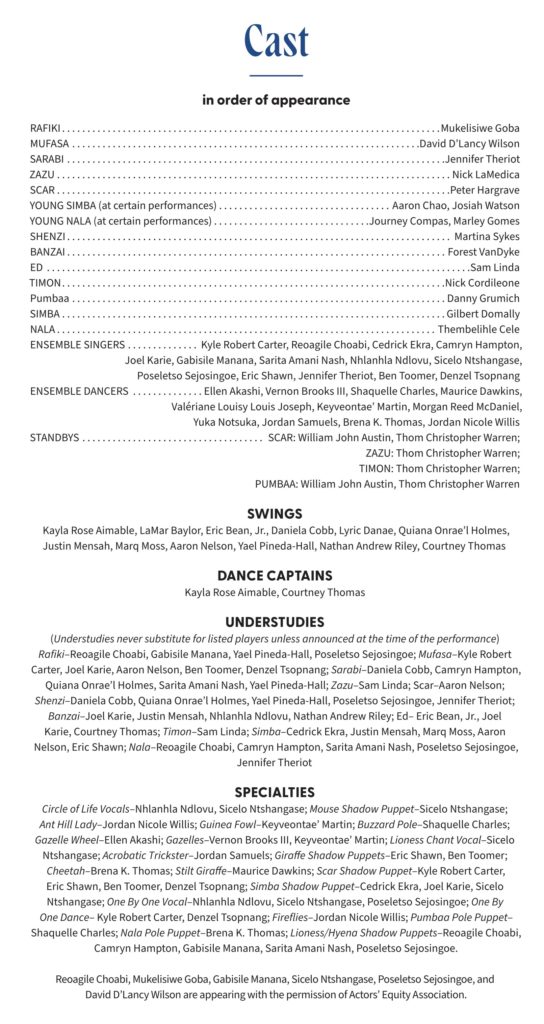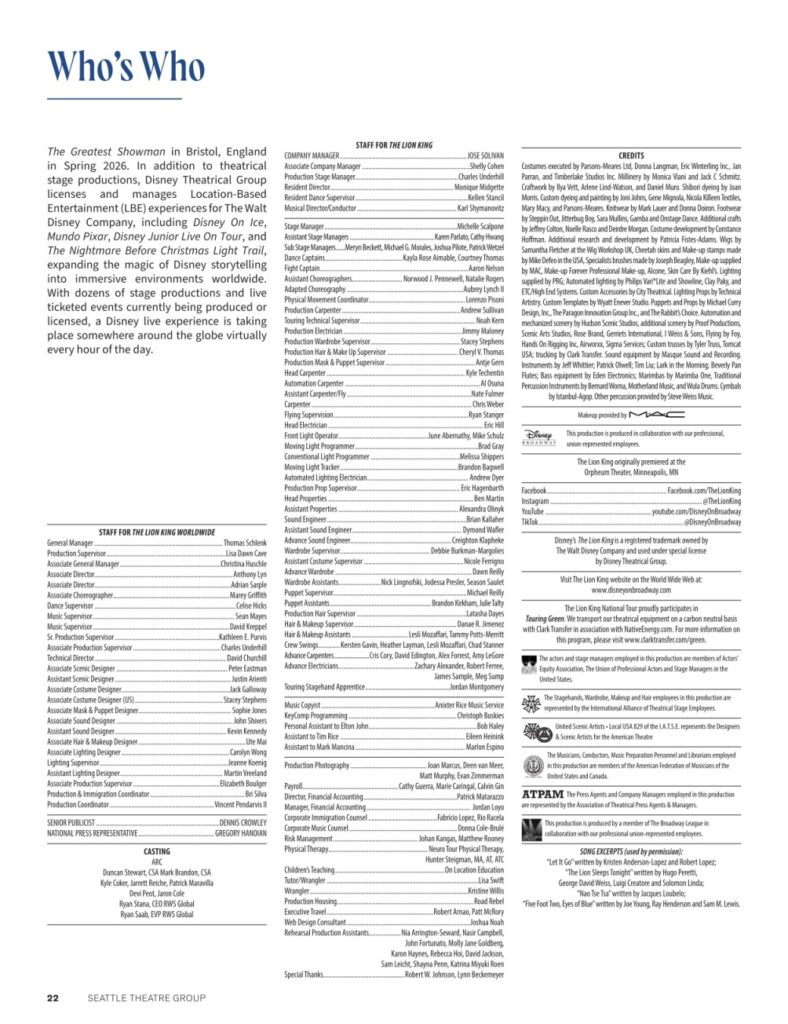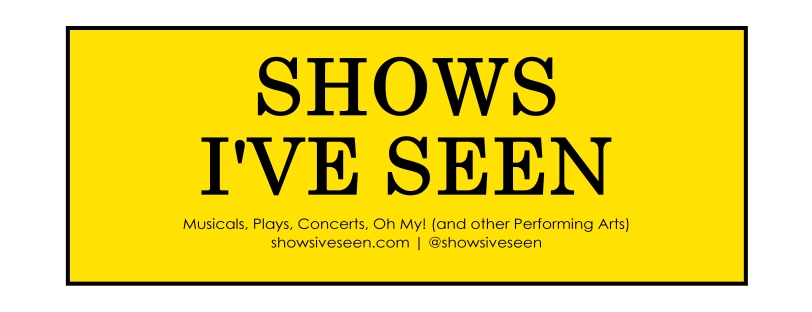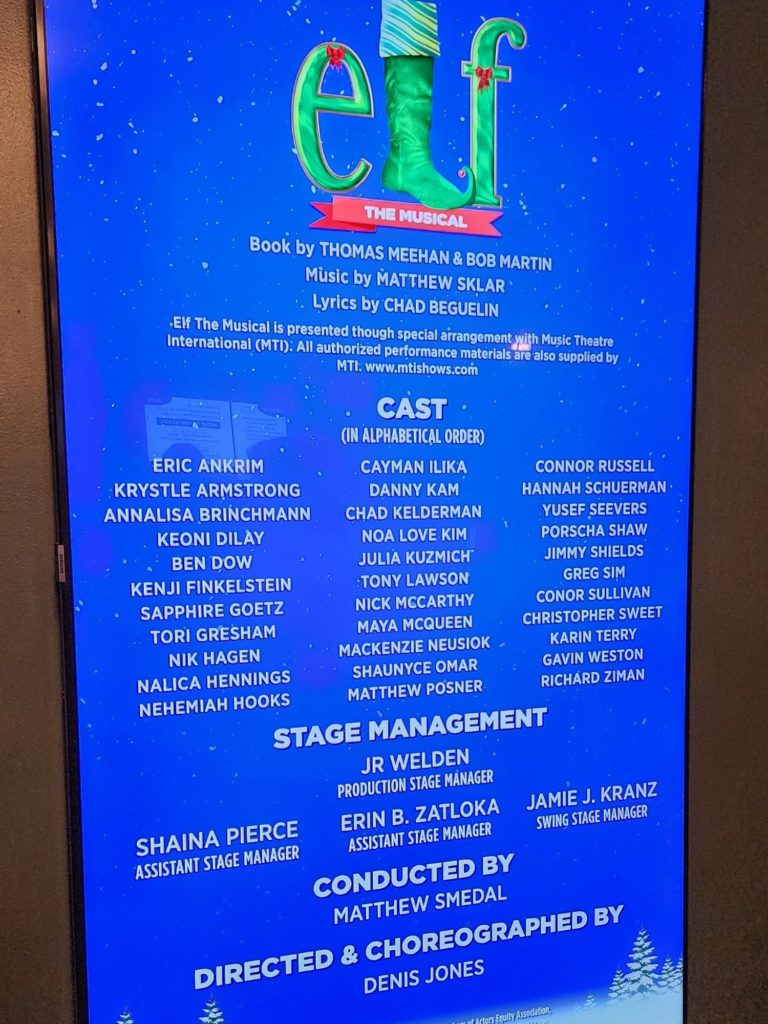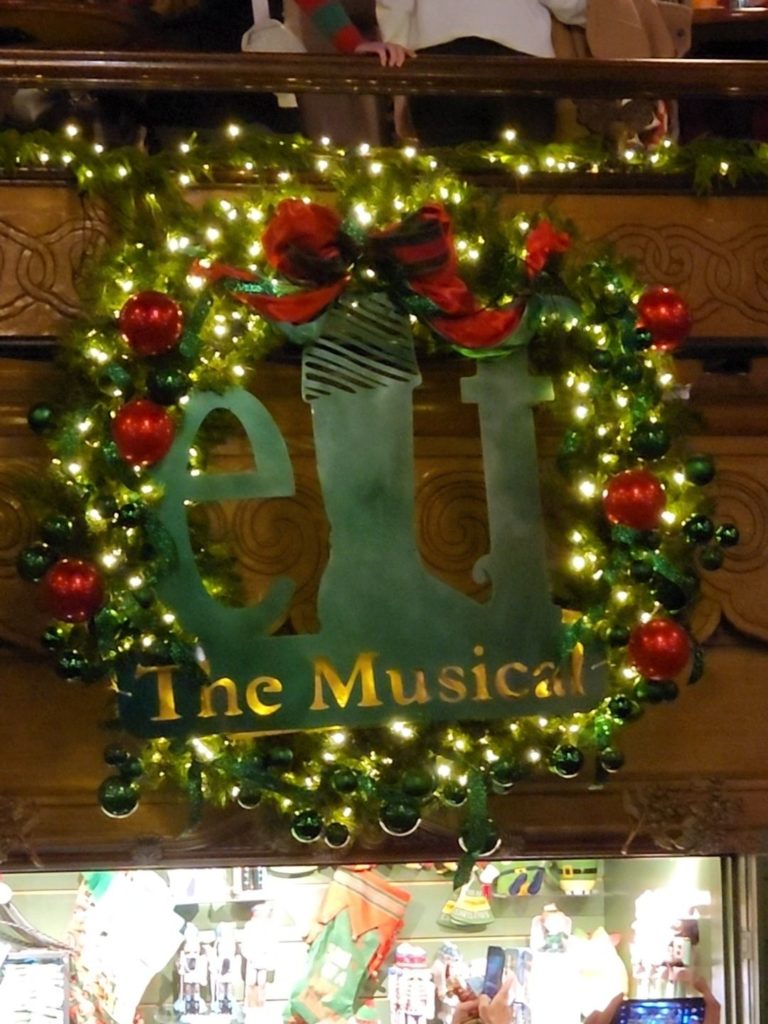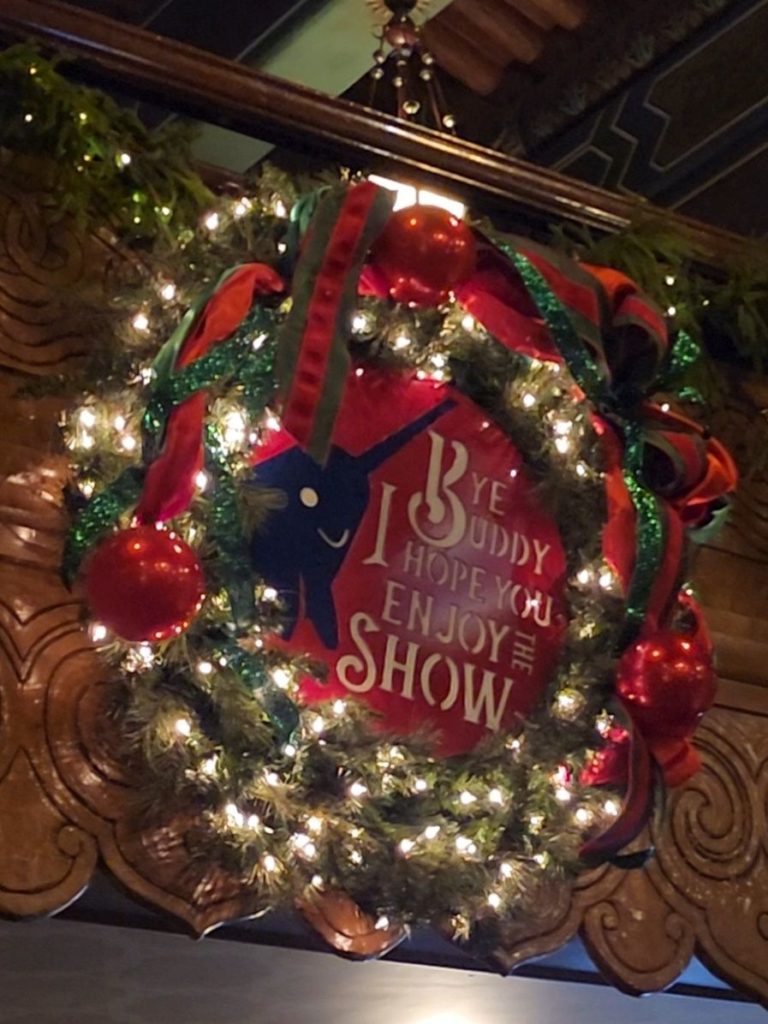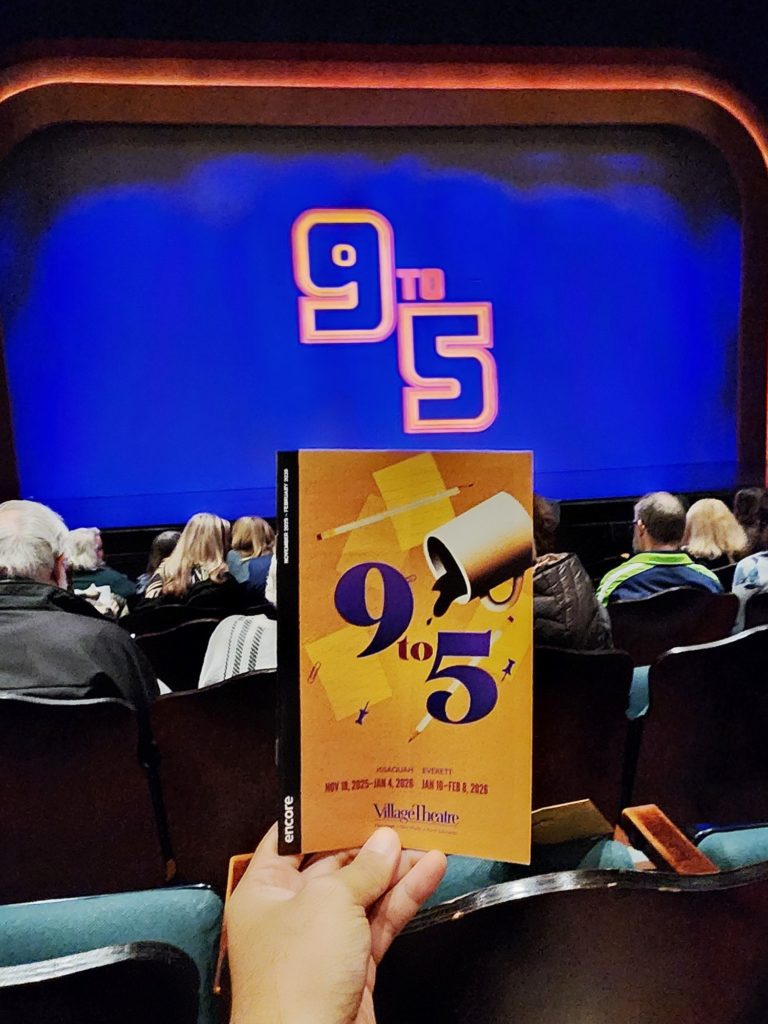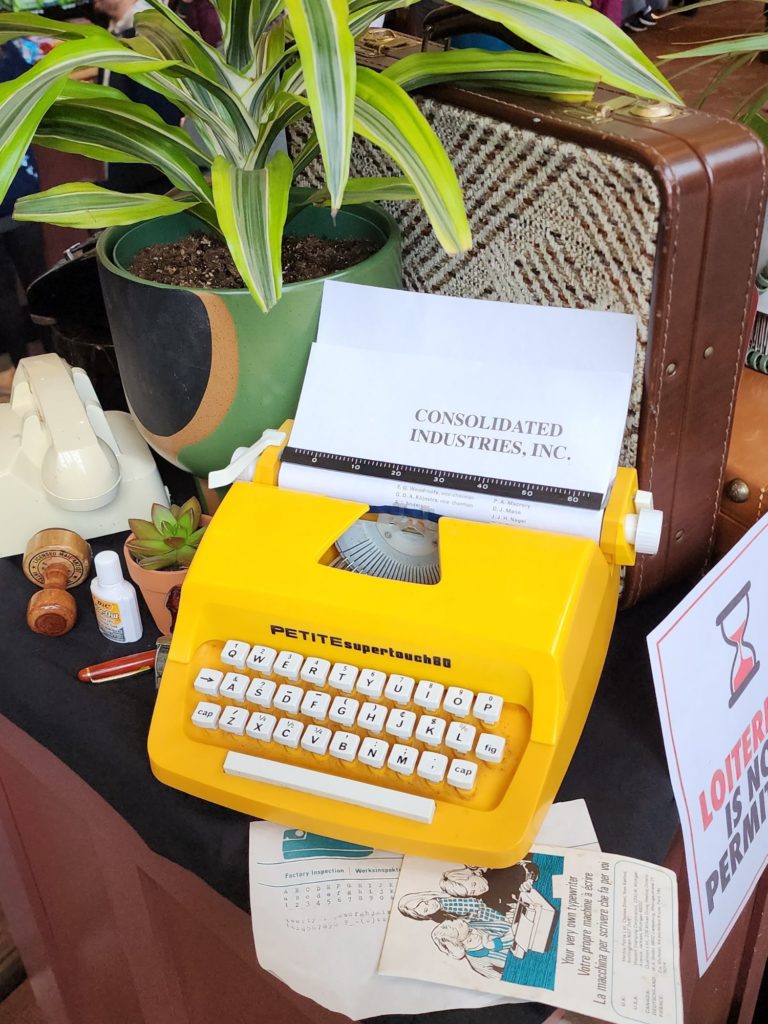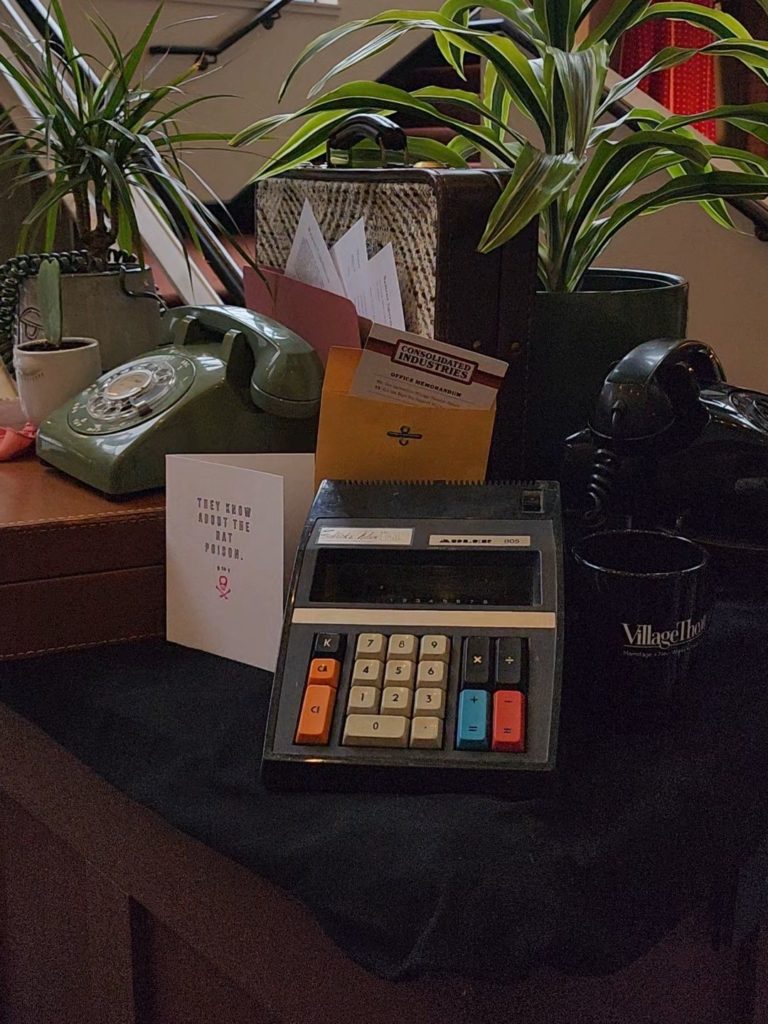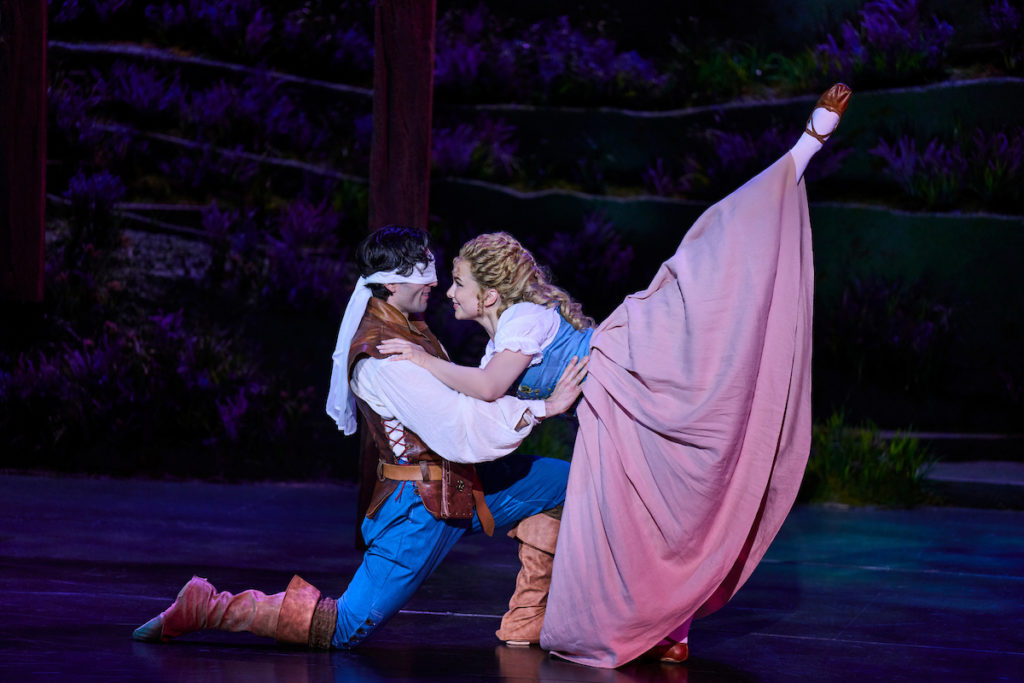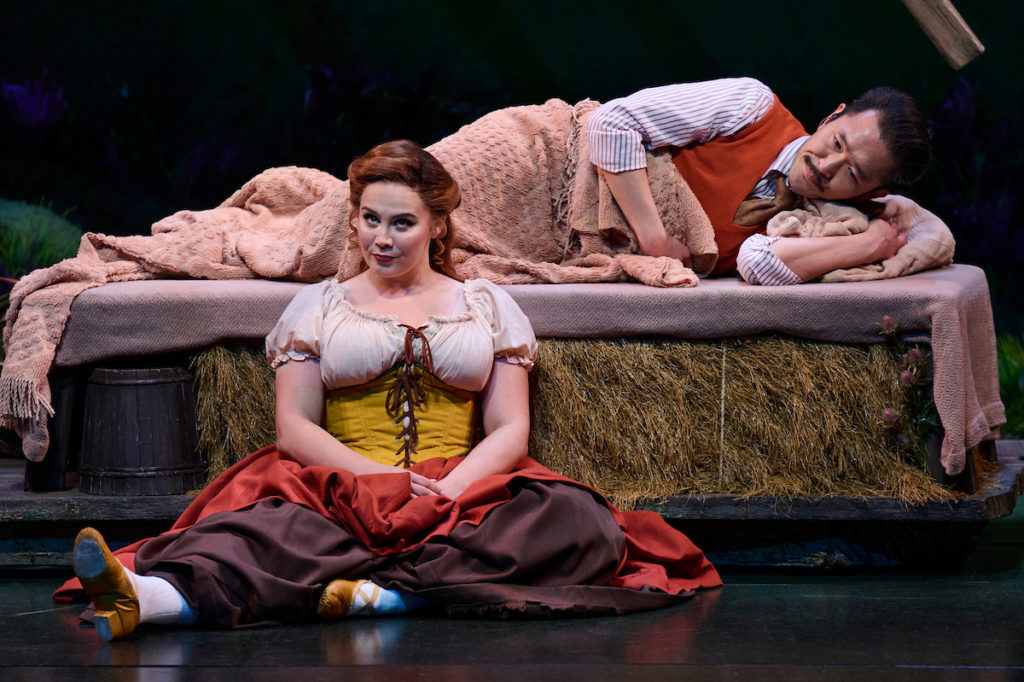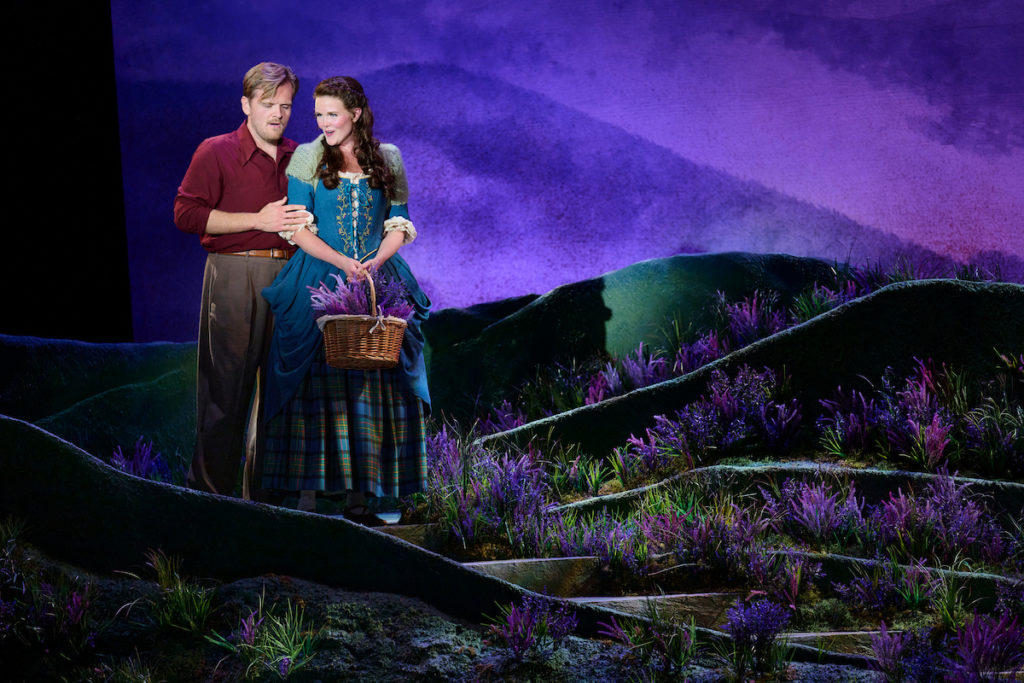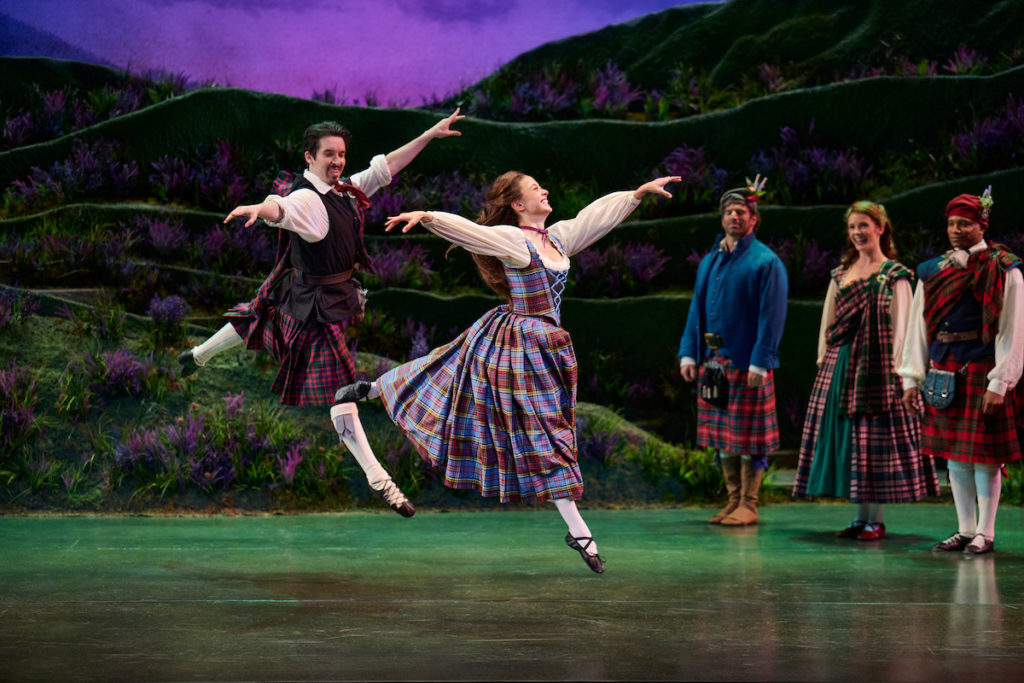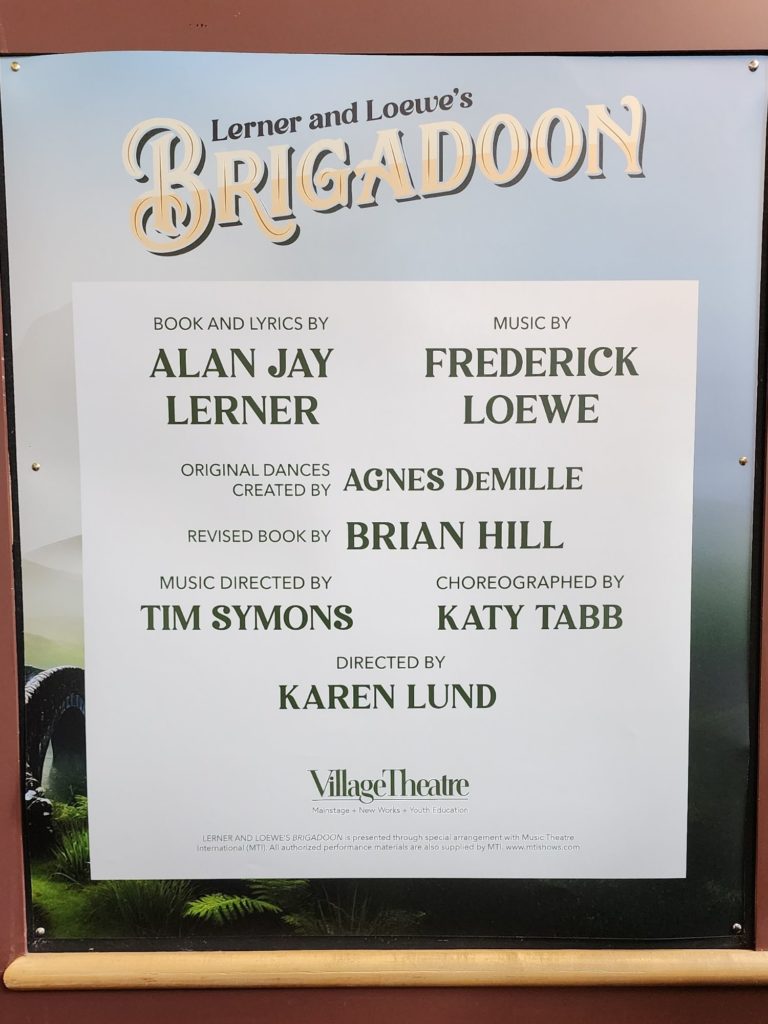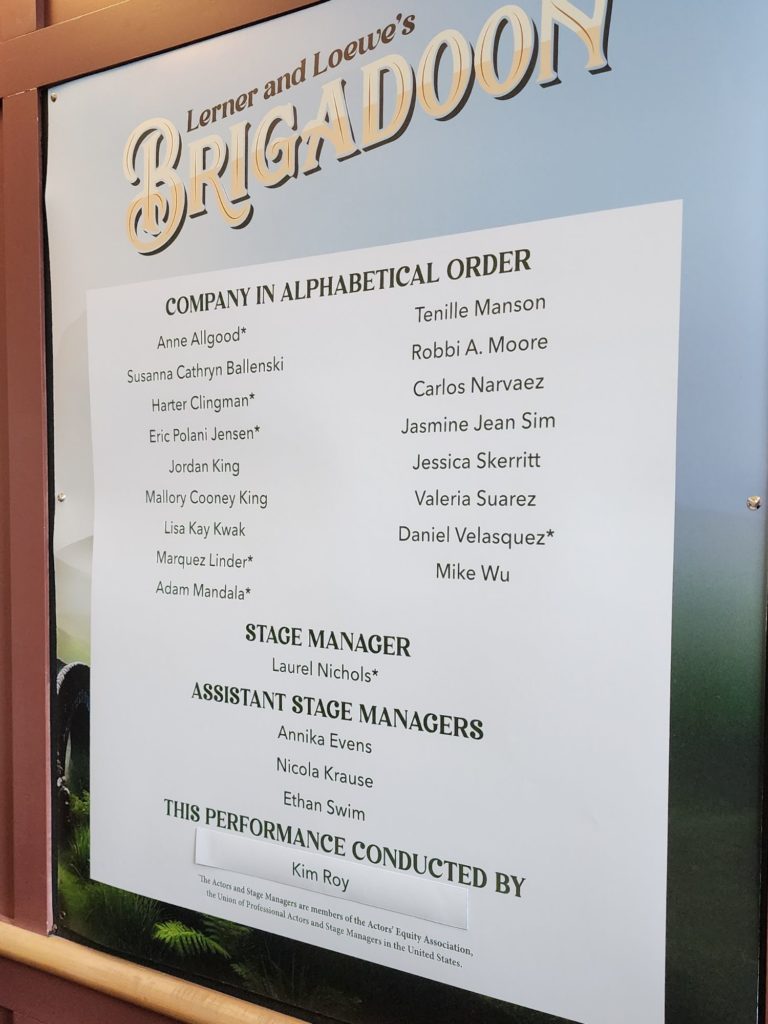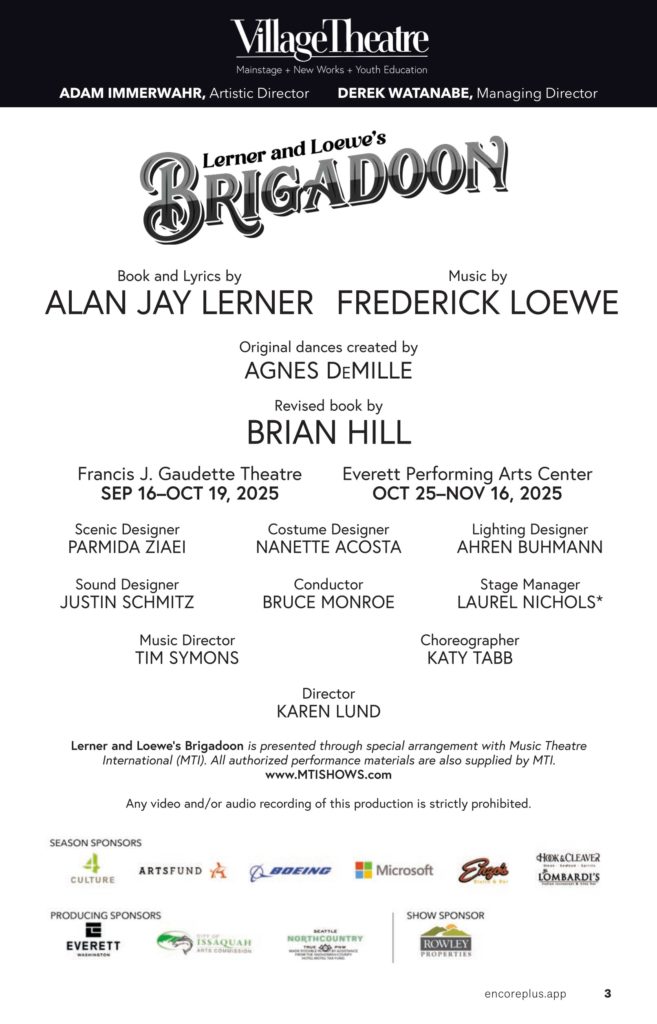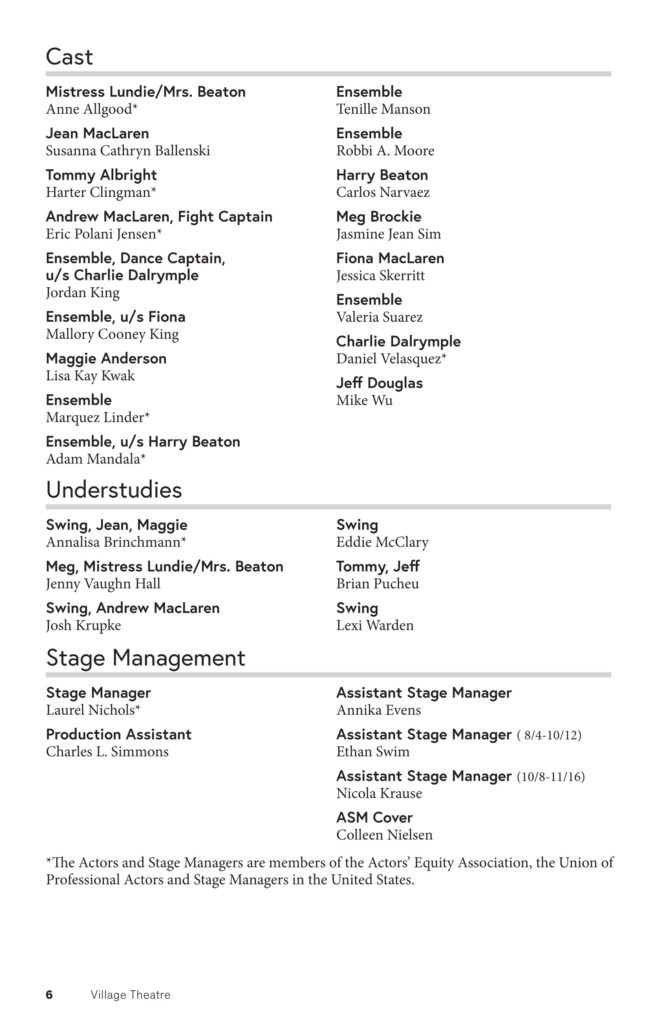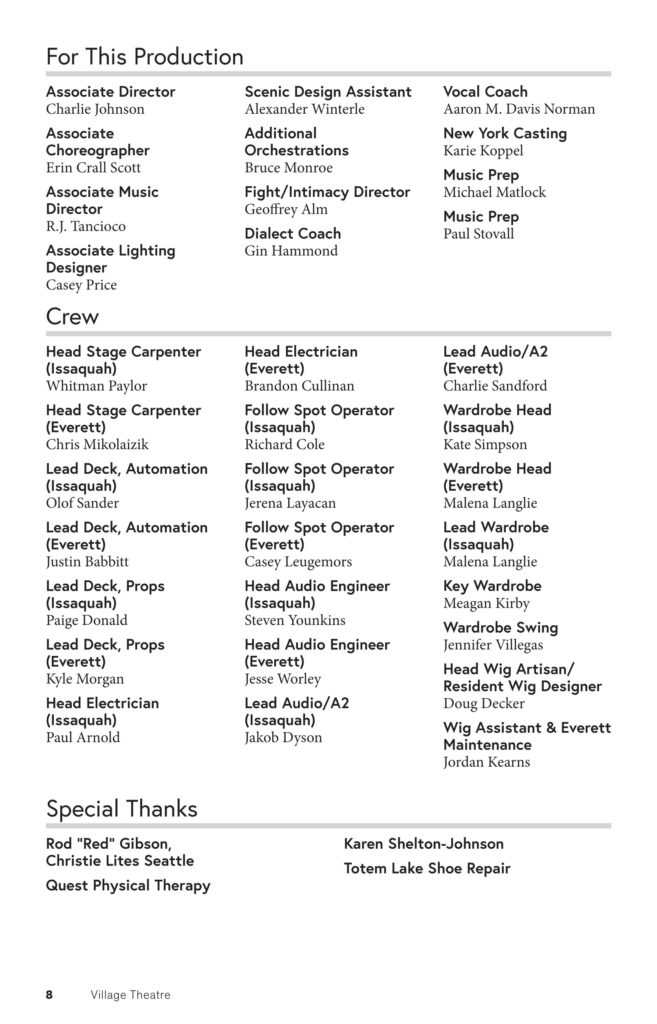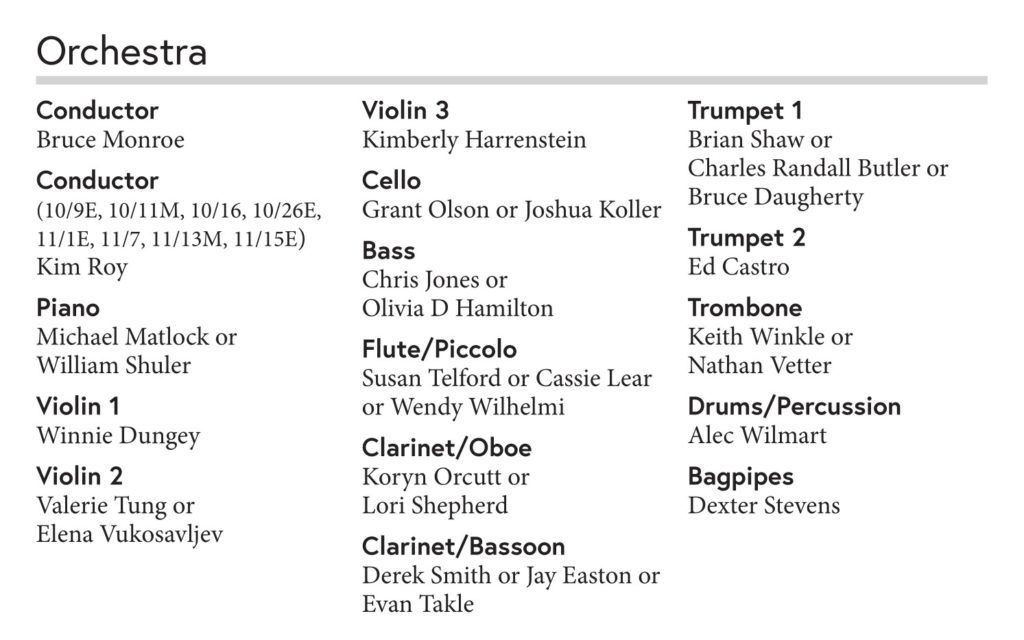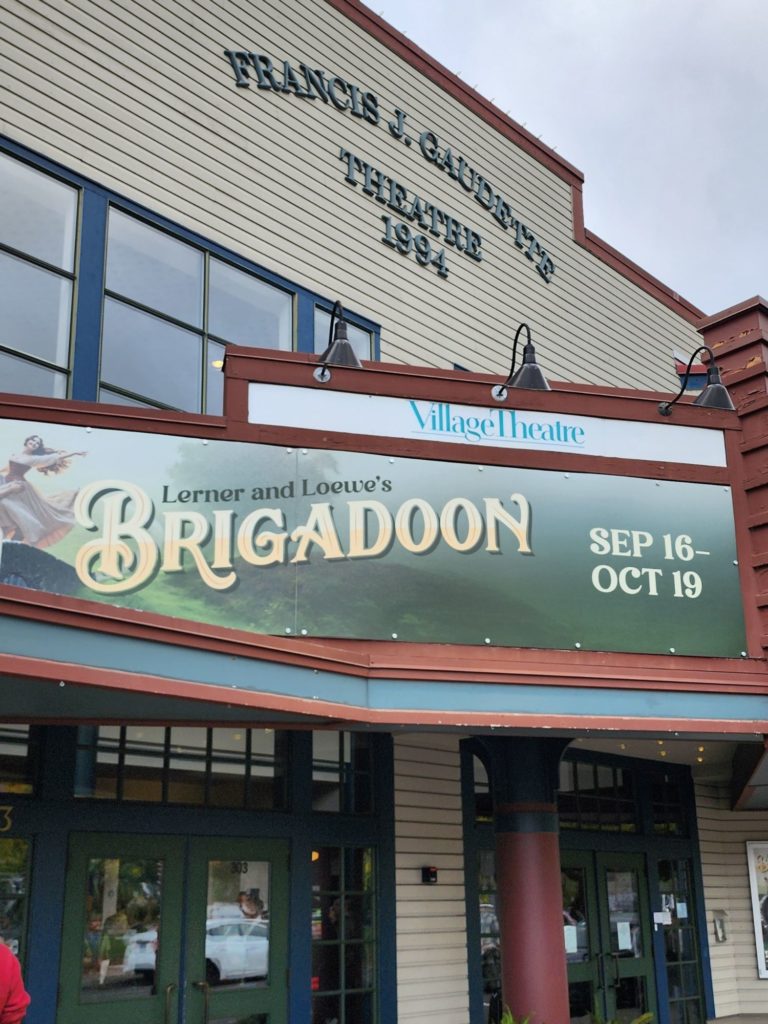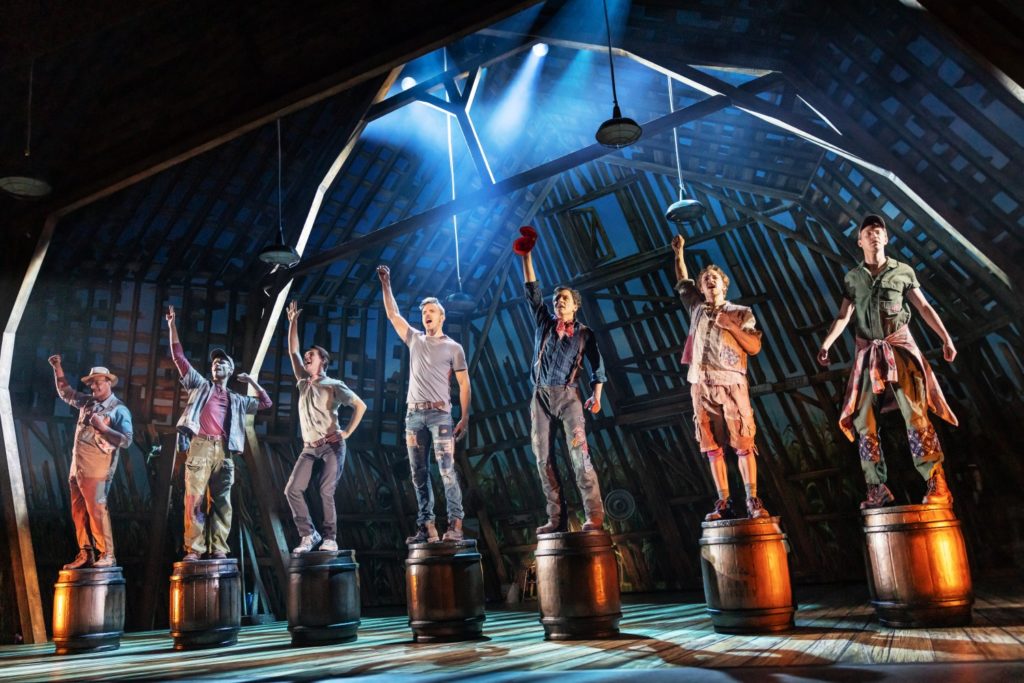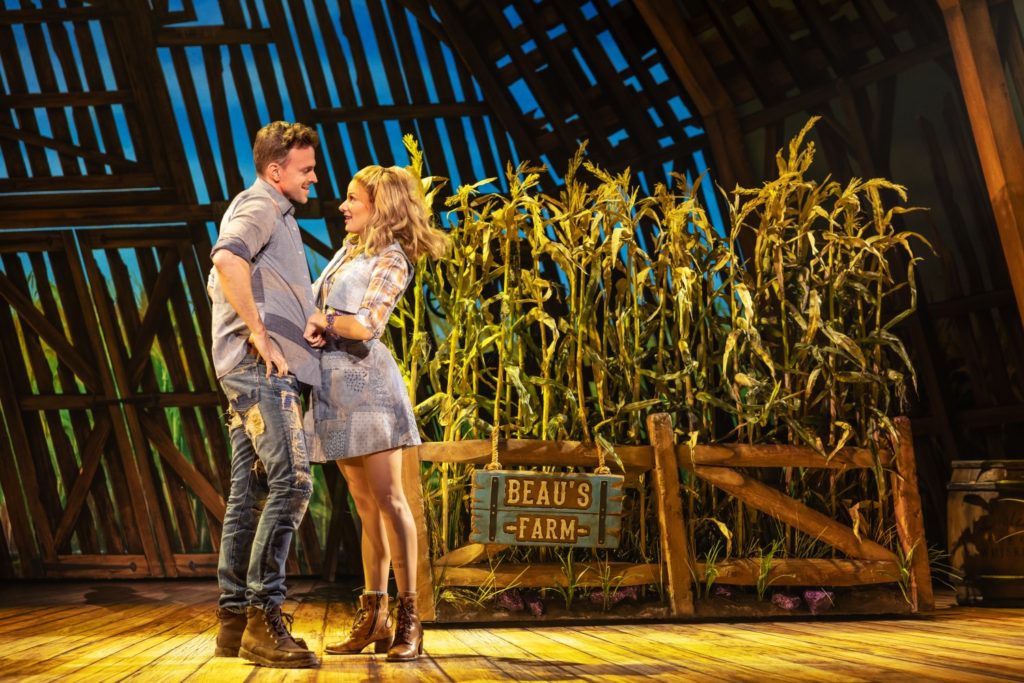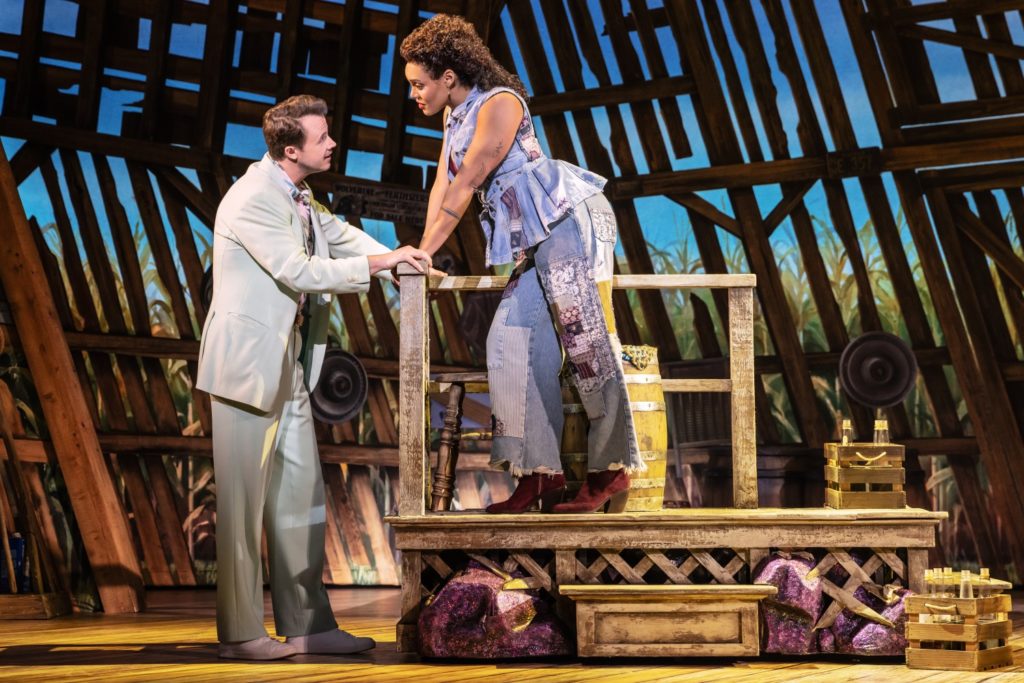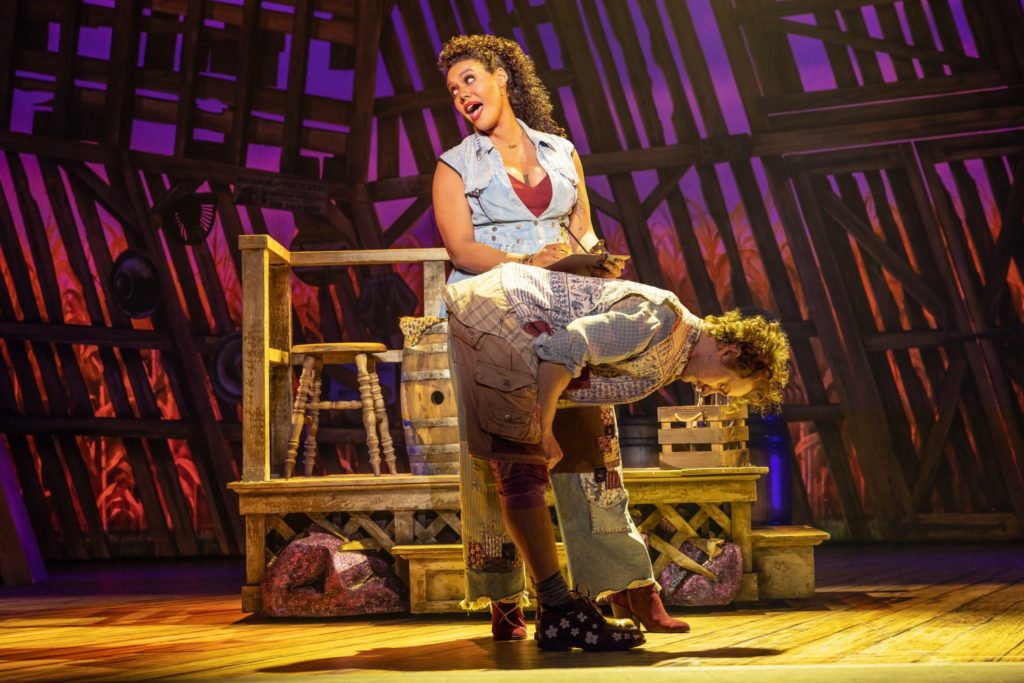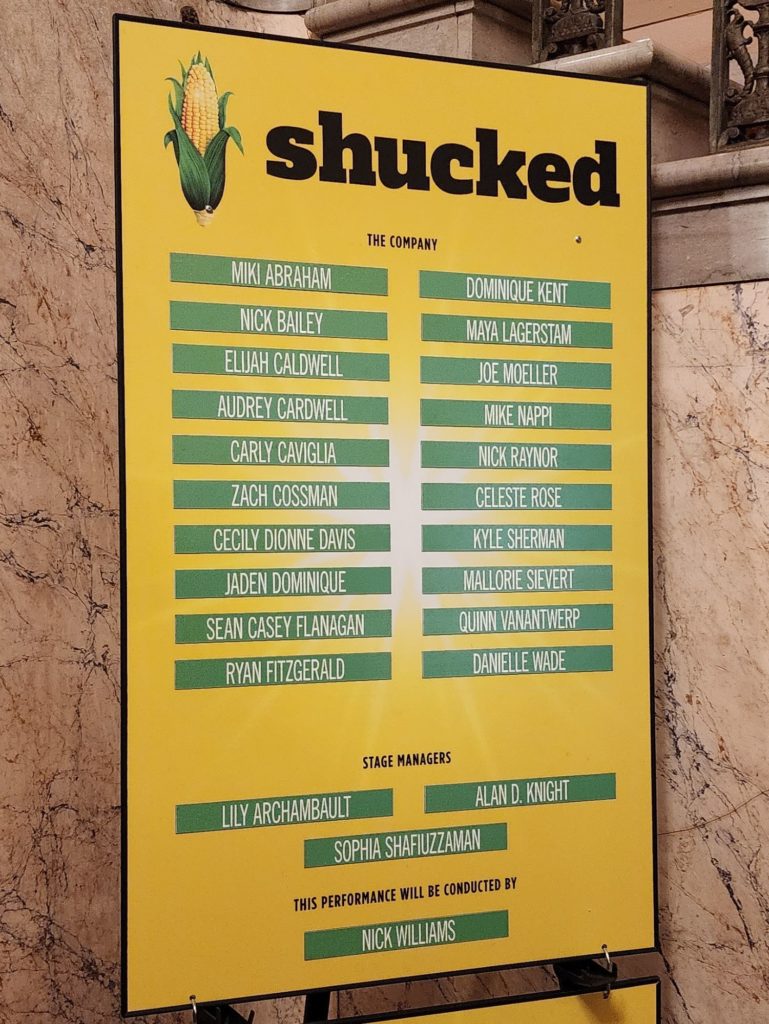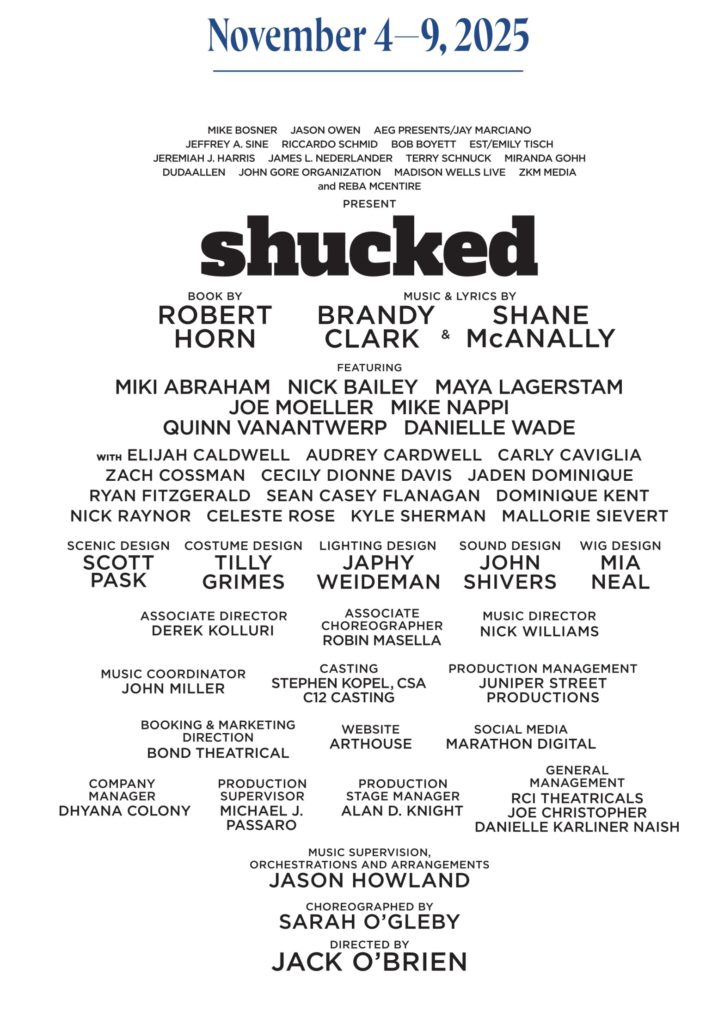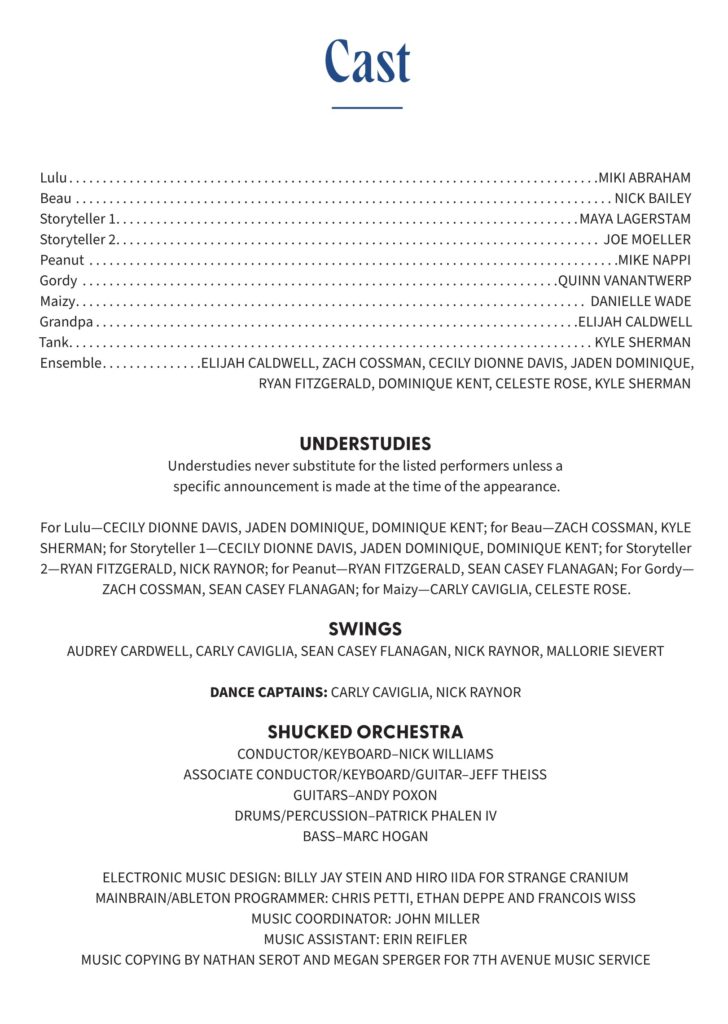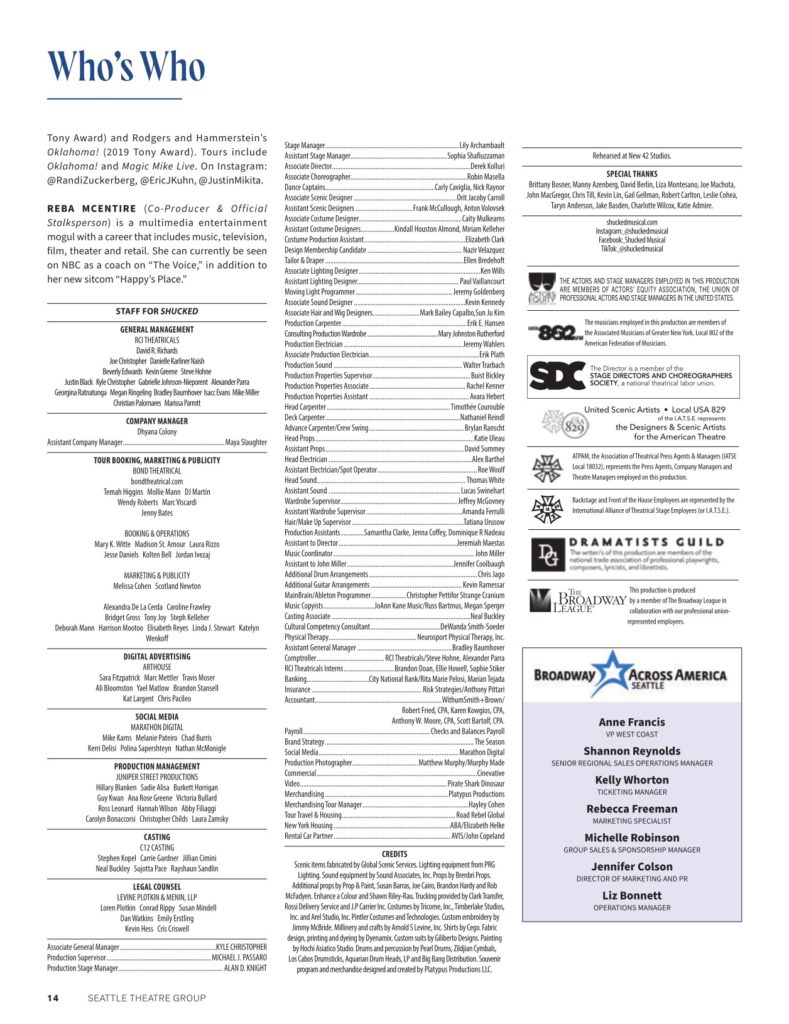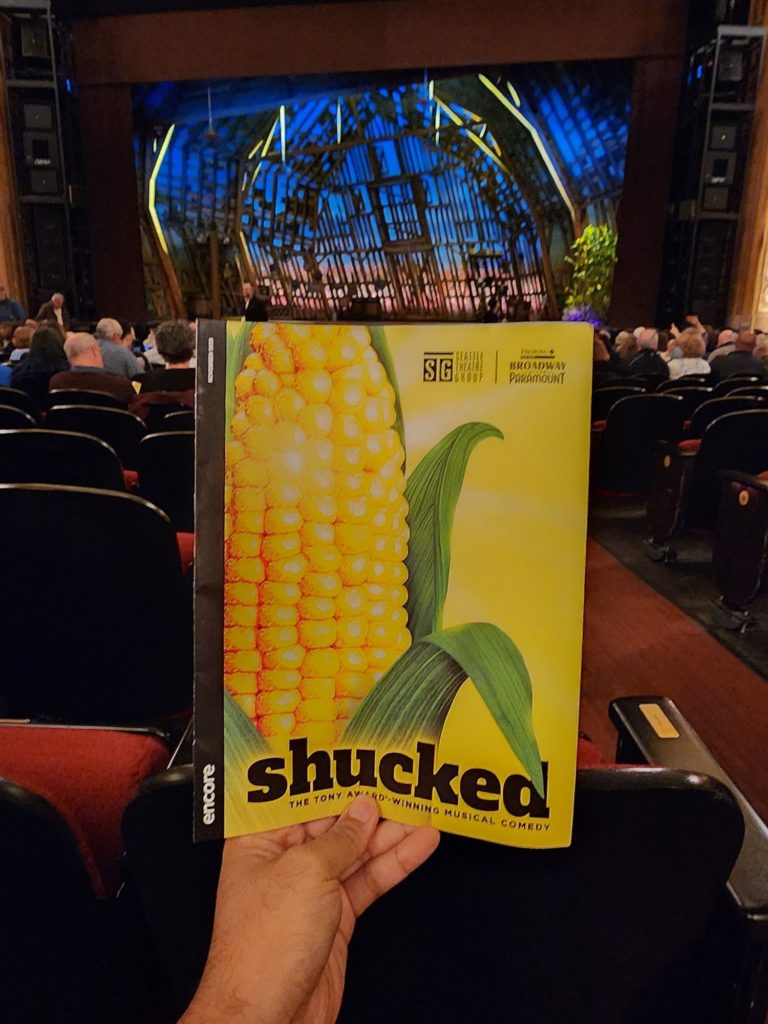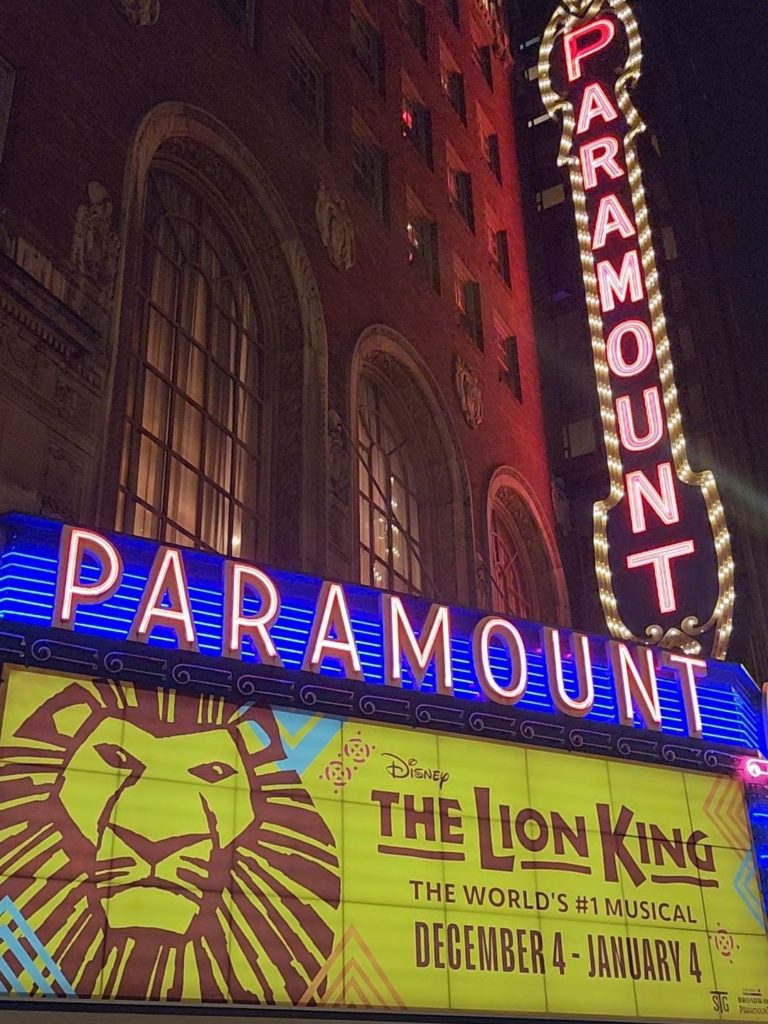
Elevator Thoughts (aka Tweet): Happy opening weekend to Disney’s The Lion King musical at Paramount Theatre from Broadway Seattle and Seattle Theatre Group. Spectacular synergy between puppetry, costume, and scenic design. Performing in Seattle till 1/4/26.
Whether young or old, see it!
Was This the First Time I Attended a Production of this Show? No, I saw the tour the last time it came to Paramount Theatre.
Would I See It Again 3 Years from Now? Probably not, twice is enough for me
Mainstream Appeal: Medium to high
If A Random Stranger Asked What Show They Should See This Weekend, Would I Mention This Production? Yes
My Synopsis (No Spoilers): Inspired by the classic Disney film, the story follows a young lion prince thrust into exile who must find the courage to reclaim his rightful place as the lion king.
Synopsis from the Licensor or Theatre Company: Giraffes strut. Birds swoop. Gazelles leap. The entire Serengeti comes to life as never before. And as the music soars, Pride Rock slowly emerges from the mist. More than 100 million people around the world have experienced the awe-inspiring visual artistry, the unforgettable music, and the uniquely theatrical storytelling of this Broadway spectacular – one of the most breathtaking and beloved productions ever to grace the stage. Winner of six Tony Awards®, including Best Musical, The Lion King brings together one of the most imaginative creative teams on Broadway. Tony Award®-winning director Julie Taymor brings to life a story filled with hope and adventure set against an amazing backdrop of stunning visuals. The Lion King also features the extraordinary work of Tony Award®-winning choreographer Garth Fagan and some of Broadway’s most recognizable music, crafted by Tony Award®-winning artists Elton John and Tim Rice. There is simply nothing else like The Lion King.
Type: Musical
World Premiere: No
Several or Few Scenes: Several
Several or Few Settings/Locations: Several
Static (Stationary) or Dynamic Set: Dynamic
Prior Exposure/Knowledge Required: You’ll appreciate this more if you saw the movie, but it’s not required.
Defined Plot/Storyline: Yes
Live Band/Orchestra: Yes
Union Actor(s): All
Total Actor(s): Too many to count
Perceived Pace of the Show: Medium speed
Was there an intermission? Yes
Length (Including Any Intermission): 2.5 hours
Other Rave(s)
- Design: The production’s true star was the extensive puppetry, costume, and scenic design by Julie Taymor, Michael Curry, and Richard Hudson. While reminiscent of the intricate style seen in Life of Pi, the puppetry here was even more ambitious. The designers didn’t limit themselves to the iconic animals of the African savanna. Every element, down to the swaying grass, was transformed into a living, moving piece of costume/puppet art. Among the most memorable creations were the tears built into the lioness’s mask and the mesmerizing gazelle hunt, in which the gazelle’s body fractured into multiple body parts.
- “Circle of Life” Bookends: The show opens with a glorious hook in “The Circle of Life” song. The stage (and even the audience itself) was alive with action, offering so much to take in that I found myself with a bit of FOMO torn between multiple points of focus. It was overwhelming in a good way. If you have the chance, sit on the orchestra level. I remember watching from the balcony last time and missing much of this immersive energy from the actors roaming the audience. The opening song built to a triumphant climax. The musical came full “circle” in a bookend, closing with the same piece for a thrilling, satisfying conclusion.
- “He Lives in You”: This song was executed with breathtaking imagination. At first, the staging hinted at Mufasa’s reflection, assimilating gradually like a hidden portrait in an autostereogram optical illusion. The audience sensed it before it suddenly appeared like a revelation. Midway through the number, illuminated faces of the performers appeared as if out of thin air, heightening the sense of revelation. And then, in a final flourish, a burst of vibrantly saturated, rainbow-colored dancers appeared, sharply contrasting the monochromatic palette that had defined the song until that moment.
- “Be Prepared”: Scar’s (Peter Hargrave) rendition of “Be Prepared” was another standout. It was elevated by several sharply conceived staging choices in gleeful villainous theatrical flair. The hyenas swarmed into the audience and their movements eventually snaped into a militaristic choreography that evoked the rigid precision of a North Korean (dare I say Nazi?) army parade. At one point, the number even shifted into a scene with the pulsing energy of a gay nightclub, as sculpted, bare torso-ed hyenas performed a tango-infused sequence. The whole moment brought to mind Matteo Lane’s joke about Disney villains being gay.
- Voices: Gilbert Domally’s Adult Simba brought an unexpected burst of energy with his surprisingly high voice in “Hakuna Matata.” He reignited that spark again in “He Lives in You.” It’s a shame he didn’t get more opportunities to showcase this vocal flair. But, he and Thembelihle Cele (as Nala) created beautifully sweet harmonies in “Can You Feel the Love Tonight.”
- African Themes: The stage adaptation brought a vibrant African flair that the movie didn’t come close to replicating. It was a refreshing burst of color and energy to Seattle’s typically homogenous scene. I especially loved Rafiki, whose performance (complete with a vividly painted mandrill butt) incorporated African clicking sounds into their speech.
Other Musing(s) and Observation(s)
- Climax: Disney is notorious for being accused of slipping subtle adult references into its family-friendly fare. In this production, Shenzi the hyena (played by Martina Sykes) delivers an unforgettably … enthusiastic reaction (basically an orgasm) to Mufasa’s name. This is definitely not something I saw in the movie. It was weird observing that sitting next to my nephew.
Theatre Company: National Tour from Broadway Across America and Seattle Theatre Group
Venue: Paramount Theatre
Venue Physical Address: 911 Pine St, Seattle, WA 98101
Price Range: $49-230
Ticket Affordability Options: Seattle Theatre Group might partner with an organization you’re affiliated with for discount tickets. For example, I believe UW employees/students are still eligible for an organization discount.
Dates: 12/4/25 to 1/4/26
Seating: Assigned Seating
Parking: Paid street parking and paid garage parking. The best parking garage is under the convention center w/ the entrance on Pike around the Pike and Terry intersection. Last I checked, this is one of the cheapest, least busy, and closest garages. Alternatively, you can probably find street parking as you move closer to the West Precinct (810 Virginia St, Seattle, WA 98101). Do NOT park where the Paramount subscribers park. Last I checked, they usually park in the garage attached to the former Cheesecake Factory. It’ll take you at least 30 minutes to exit that garage after the show.
Like/Comment/Share my Social Media Posts About this Performance:
Buy a Ticket or Learn More:
- https://lionking.com/tour/
- https://seattle.broadway.com/shows/disneys-the-lion-king/
- https://www.stgpresents.org/events/disneys-the-lion-king/
- Program
Photos: See production photos below by Matthew Murphy, Deen Van Meer, Joan Marcus.
Cast and Production Team: See after photos below.

